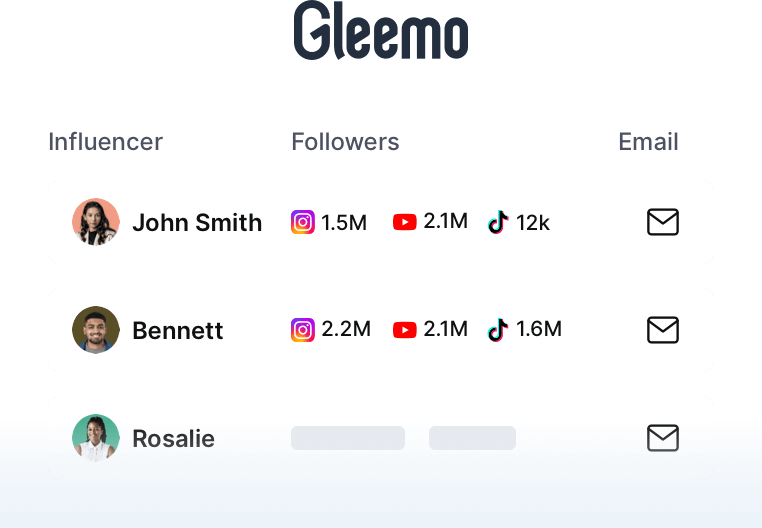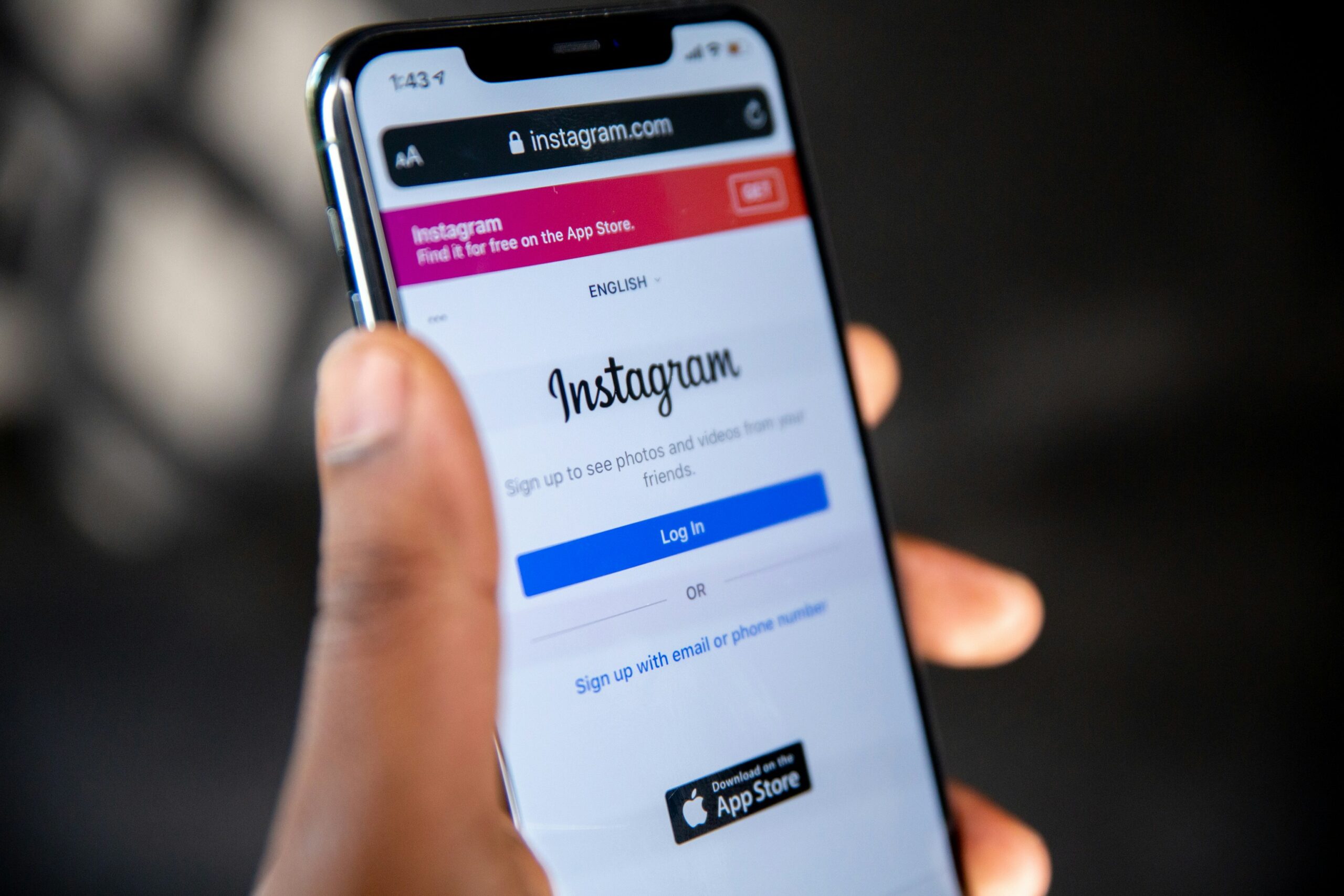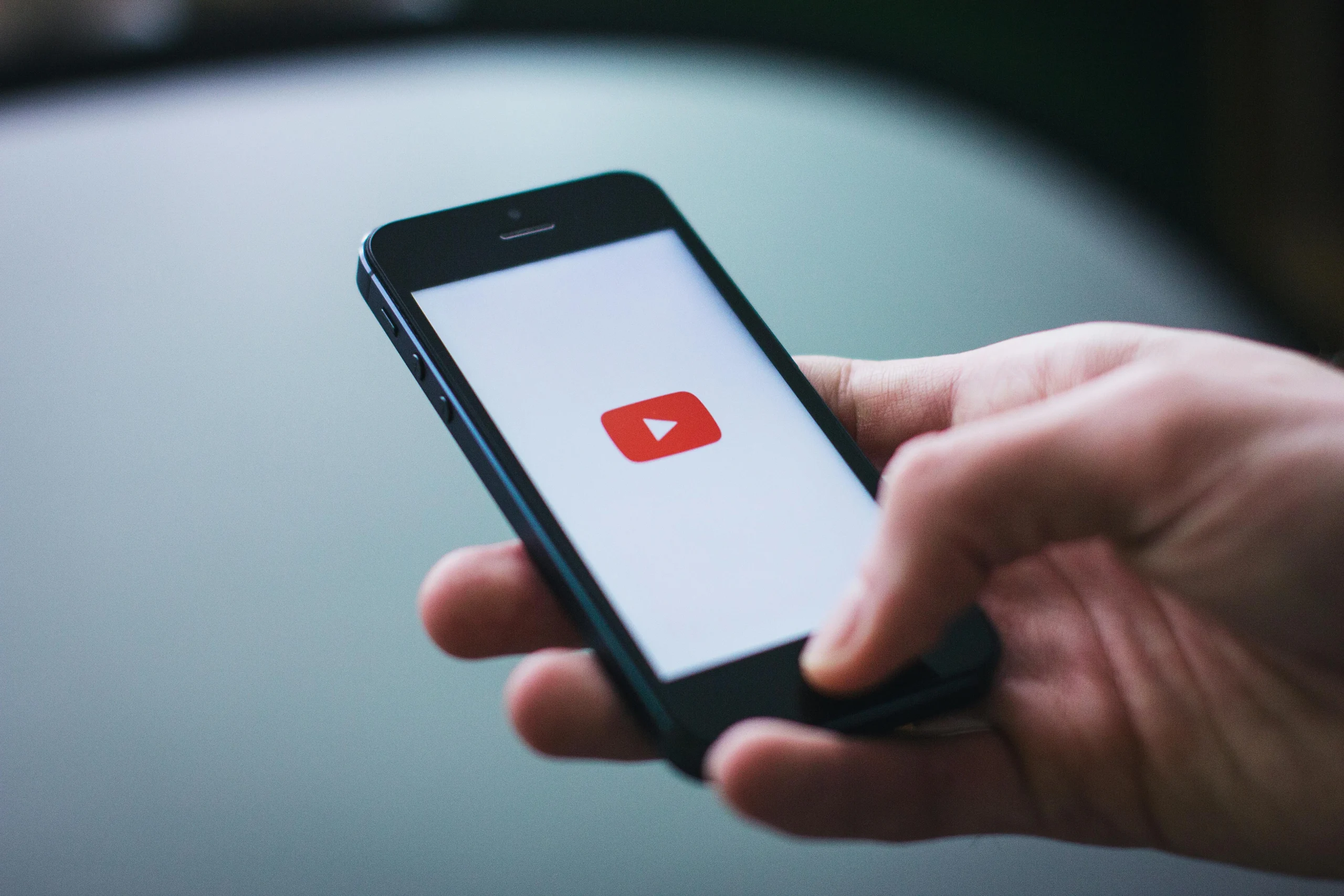YouTube influencer marketing has evolved into a cornerstone digital strategy for brands aiming to authentically engage massive audiences. Unlike fleeting social media trends, YouTube offers depth, trust, and tangible results through creators who command dedicated communities.
This guide unpacks the strategic framework and tactical execution needed to leverage YouTube influencer marketing effectively in 2025, including how modern platforms can streamline your workflow.
What is YouTube Influencer Marketing?
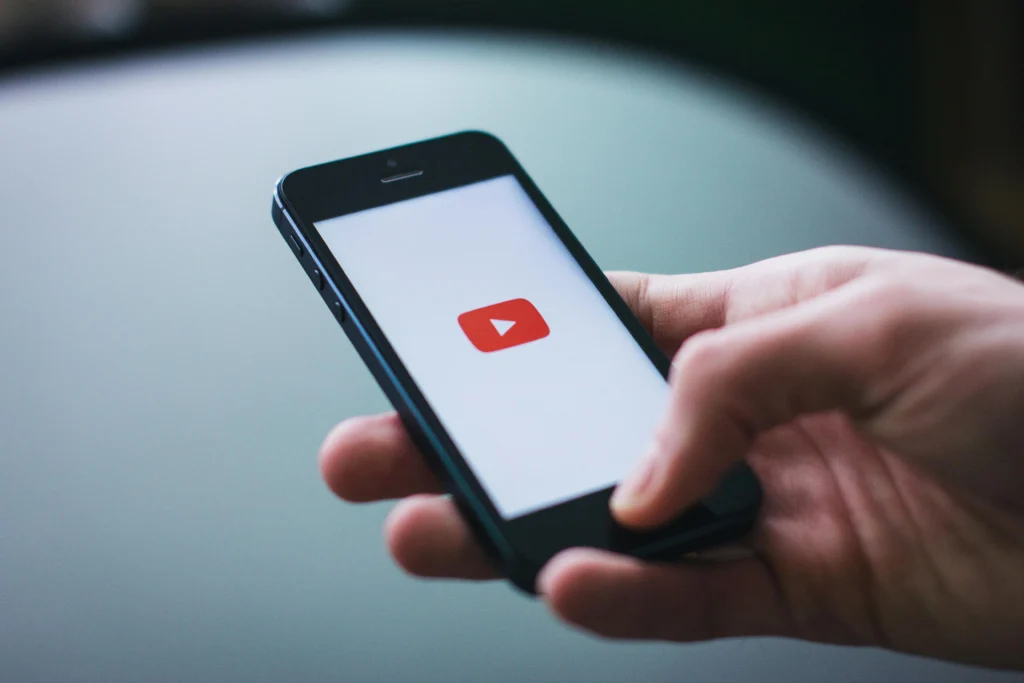
YouTube influencer marketing is a powerful strategy where brands collaborate with YouTube creators to promote their products or services. These influencers, with their established audiences, can effectively convey brand messages through various content formats, from long-form videos to YouTube Shorts.
The Benefits of YouTube Influencer Marketing
Why invest in YouTube over other platforms? Here are five key advantages:
Reach Highly Targeted Audiences
Access niche demographics and interest groups already curated by the influencer. If your target customer watches beauty tutorials, partnering with relevant beauty creators is efficient targeting.
Build Authentic Trust & Credibility
61% of people believe in the recommendations of influencers. Influencer endorsements act as powerful social proof, bypassing ad skepticism. Their genuine enthusiasm significantly boosts brand perception.
Drive High-Intent Traffic & Conversions
YouTube is a platform for research and discovery. Effective influencer integrations drive viewers directly to your site, product pages, or landing pages, often resulting in measurable sales lifts and strong ROI.
Boost Brand Awareness & Visibility
Appearing on popular channels exposes your brand to potentially millions of relevant viewers, enhancing overall brand recognition.
Long-Tail Content Value
Unlike Instagram Stories or TikTok Reels, YouTube videos live indefinitely in search results. A tutorial video promoting kitchen tools can drive sales for years after publication.
Enhance SEO & Content Strategy
Influencer videos generate backlinks and social signals, indirectly boosting your site’s search rankings. Their content also provides valuable user-generated assets.
How to find YouTube influencers
Finding the right influencers is paramount for campaign success. It goes beyond just subscriber count. Key steps:
1. Search YouTube Directly
Type relevant keywords into YouTube’s search bar to find creators producing content related to your industry. For example, if you’re promoting outdoor products, you can search for “best hiking gear review.”
Use the “Filters” option to refine results by video type, upload date, and popularity. You can also browse the “Trending” tab to discover rising creators and popular content.
Additionally, search for hashtags like #skincare to find influencers whose content aligns with your brand.
2. Leverage Google Search
Pair niche-specific keywords with terms like “best YouTube influencers” or “top [industry] YouTubers” to uncover curated lists, blog articles, and ranking sites highlighting top creators. For instance, search for “Serbian YouTube influencers” or “best fitness YouTubers in New York.”
Check the “Video” tab in Google search results to sift through top videos and identify relevant influencers or channels. Google’s “People Also Ask” and related searches can further refine your results.
3. Leverage Influencer Marketing Platforms
Platforms like Gleemo streamline influencer discovery. You can search databases of millions of creators using highly specific filters: subscriber count, location, engagement rate, audience demographics (age, gender, location), keywords in video titles/descriptions, past brand collaborations, niche categories, and more. This replaces hours of manual searching with precision targeting.
4. Analyze Competitors’ Sponsored Content
Search for influencers who have worked with brands similar to yours and review their past sponsored content. Pay attention to comment sections and engagement metrics to determine whether their audience trusts their recommendations and engages positively with sponsored posts.
5. Investigate Influencer Communities and Forums
Visit forums like Reddit or specialized influencer communities where creators often share their experiences and collaborate with brands. These platforms allow you to directly interact with influencers and learn about their interests and expertise.
6. Partner with an Influencer Marketing Agency
Agencies with extensive industry experience can leverage their connections to identify suitable YouTube influencers for your brand. They handle research, outreach, and negotiations, saving you time and effort. However, this option may come at a higher cost and offer less control over influencer selection and management.
7. Vet Potential Partners Rigorously
- Engagement Rate: ((Likes + Comments) / Subscribers) * 100 is far more important than raw subscribers. Look for channels consistently hitting engagement significantly above their category average.
- Audience Authenticity: Watch for signs of fake subscribers/bots (sudden spikes, low view counts vs. subs, generic comments). Platform analytics often highlight this.
- Content Quality & Brand Fit: Does their style, tone, and content quality align with your brand image? Watch multiple videos.
- Audience Demographics: Do they actually match your target customer? Platform data is vital here.
- Past Collaboration Performance: Look for previous sponsored content and gauge audience reception. Ask creators for brief case studies if possible.
By leveraging these methods and tools, you can efficiently find YouTube influencers that align with your brand’s values and marketing goals, laying a solid foundation for successful influencer marketing campaigns.
8 High-ROI YouTube Campaign Types
YouTube’s rich content formats offer tremendous potential for influencer marketing, from quick, scrollable short videos to more detailed, educational long-form content. Below are 8 high-return on investment (ROI) YouTube influencer campaign types along with their respective reasons for effectiveness, best use cases, and tips:
1. Product Reviews & Unboxings
Why it works: Influencers provide honest opinions on products, showcasing their pros and cons in detail. According to Google, up to 40% of shoppers worldwide report purchasing products they discovered on YouTube.
Best for: Brands launching new products or wanting to enhance product visibility and credibility. Suitable for products across various categories such as electronics, beauty, fashion, etc.
Tips: Pick influencers whose followers align with your target demographic. Offer them exclusive early access to the product to create anticipation and provide fresh content for their audience.
2. How-To/Tutorial Videos
Why it works: It positions the brand as a helpful resource by providing valuable insights and instructions, enhancing the product’s perceived value, and encouraging its proper use.
Best for: Products that require demonstration or have unique selling points that need detailed explanation.
Tips: Identify influencers known for their educational content. Provide them with clear guidelines to ensure the tutorial aligns with your brand’s messaging while allowing room for their creative input.
3. Hauls
Why it works: It allows influencers to showcase multiple products in one video, providing variety and inspiration to viewers and creating a one-stop shopping experience.
Best for: Fashion, beauty, and lifestyle brands looking to display a range of products and inspire purchases.
Tips: Collaborate with influencers to curate haul themes that resonate with current trends and your brand’s identity. Include exclusive or limited-edition items to add excitement and urgency.
4. Day-in-the-Life Vlogs
Why it works: It creates an emotional connection between the audience and the product by seamlessly integrating it into the influencer’s daily routine, making the product feel like a natural part of life.
Best for: Brands aiming to build long-term relationships with their audience and promote products used in everyday life.
Tips: Encourage influencers to be transparent about their product usage and experiences. Allow them creative freedom to incorporate the product in ways that feel authentic to their personal style.
5. Contests & Giveaways
Why it works: It leverages the allure of winning free products to incentivize audience participation, increasing engagement and expanding brand reach through shares and word-of-mouth.
Best for: Brands seeking rapid audience growth and heightened engagement. Effective for products with wide appeal that can attract diverse participants.
Tips: Partner with influencers who have loyal followings. Design contest mechanics that encourage maximum participation, such as requiring likes, comments, and shares to enter.
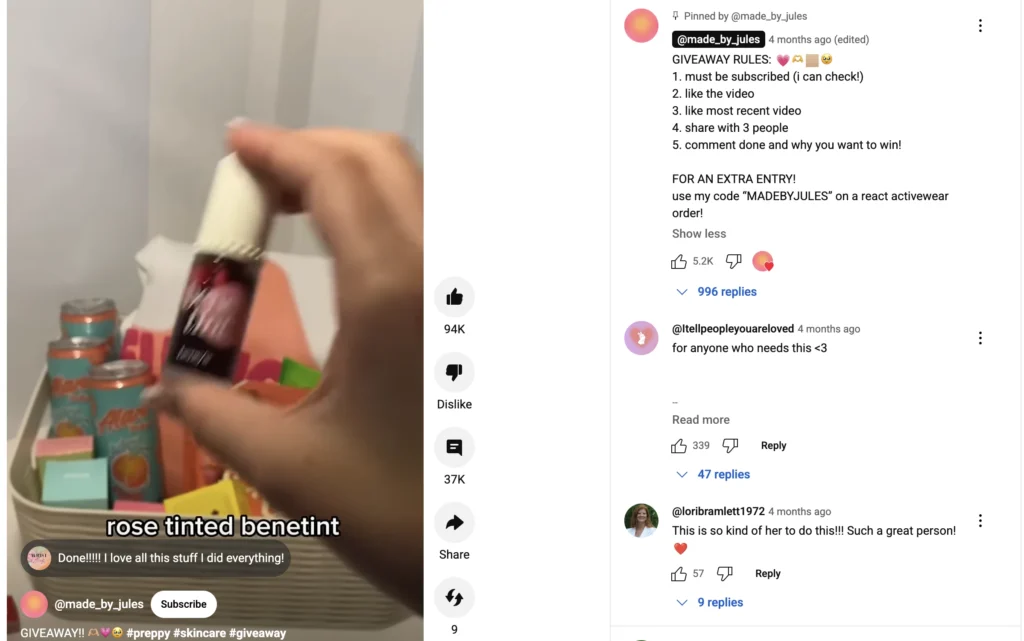
6. Sponsored Challenges
Why it works: It engages audiences with entertaining and interactive content while showcasing the product’s practical applications and benefits.
Best for: Active and experiential products like fitness gear, outdoor equipment, or culinary tools that can be creatively demonstrated through challenges.
Tips: Brainstorm challenge ideas that align with your brand’s image and the influencer’s content style. Ensure the challenge is achievable yet captivating to maintain viewer interest.
7. Educational Deep Dives or Explainer Videos
Why it works: It establishes the brand as a thought leader by providing in-depth knowledge on relevant topics, with the product positioned as a viable solution to the discussed issues.
Best for: Complex products or services that require detailed explanations to highlight their advantages and differentiate them from competitors.
Tips: Collaborate with influencers who have a reputation for credible and well-researched content. Use relatable analogies and real-world examples to simplify complex concepts.
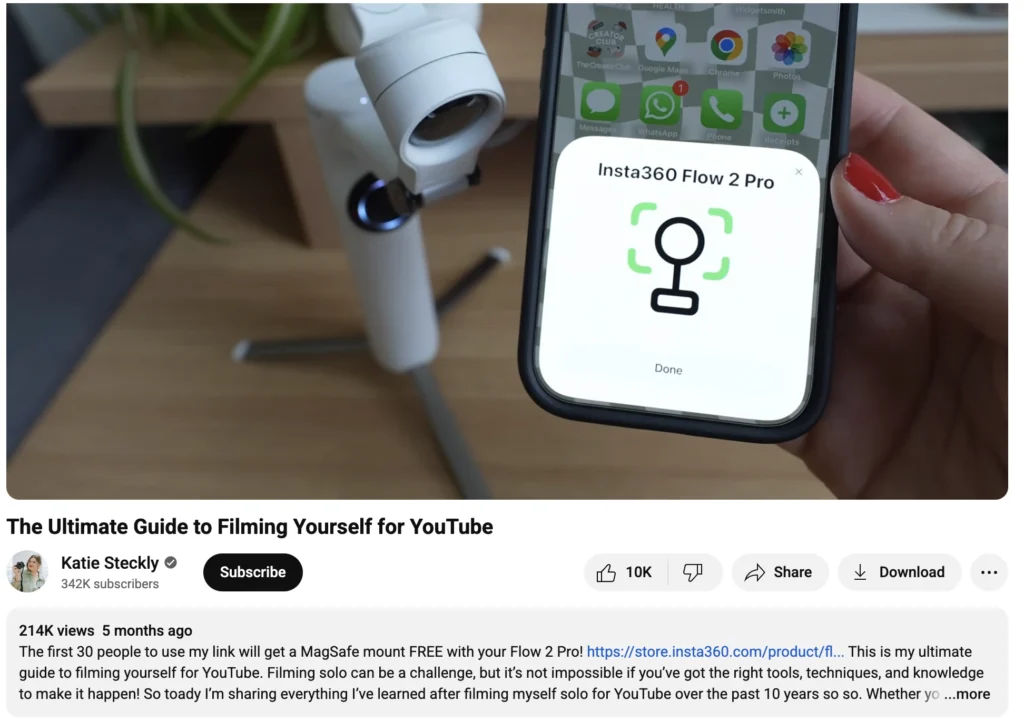
8. Pre-Release Content
Why it works: It generates anticipation and excitement by giving audiences a sneak peek of upcoming products, creating a sense of exclusivity and urgency.
Best for: Brands with highly anticipated product launches or significant updates that warrant early attention and buzz-building.
Tips: Coordinate closely with influencers to maintain confidentiality and synchronize content release with your marketing timeline. Provide them with comprehensive product details to create accurate and enticing previews.

Steps to Create a Successful YouTube Influencer Marketing Campaign
Are you prepared to create your own YouTube influencer marketing campaign? In the following guide, I’ll detail the exact steps involved. Let’s get started.
1. Set Clear Campaign Goals and KPIs
Before starting any campaign, it’s crucial to define what you want to achieve. For example, if you’re launching a new product, your goal might be to get 10,000 product-related searches on search engines within a month. Clear goals will guide your entire campaign strategy and help you measure its success.
- Common Goals: Brand awareness, sales conversion, lead generation, audience engagement.
- KPIs: Impressions, clicks, unique views, conversion rates, engagement rates.
You can use tools like UTM parameters or short links to track campaign performance.
2. Set a Campaign Budget
Determine how much you’re willing to spend on the campaign. This includes payments to influencers, which can be in the form of a flat fee, a commission based on sales, or a combination of both.
Also, factor in additional costs such as video production, giveaway prizes, and any ad spend to promote the influencer content. A well-planned budget helps you manage resources effectively and avoid overspending.
Wondering what YouTube influencers charge? Gleemo data breaks down the costs for different influencer tiers:
| Influencer Type | Cost per Post |
| Nano (under 10k followers) | ~$55/post |
| Micro (10k-100k followers) | ~$300/post |
| Macro (100k-1m followers) | ~$7,500/post |
| Mega (1m+ followers) | ~$100,000/post |
3. Identify the Right YouTube Influencers
Look for influencers whose content aligns with your brand’s niche and whose audience matches your target demographic. Use influencer marketing platforms like Gleemo to filter creators based on location, audience size, engagement rate, and other criteria. When evaluating influencers, avoid focusing solely on follower counts; instead, prioritize those with high engagement and genuine audience connections.
4. Develop a Campaign Strategy and Brief
Create a detailed campaign strategy outlining the target audience, goals, and content requirements. Develop a brief for influencers that specifies the video format, key messaging, branding elements, and call-to-action guidelines. Allow influencers creative freedom to integrate your brand’s content into their unique style.
Brief Template:
- Video Topic/Angle: Brainstorm this with the influencer if you don’t have a specific idea.
- Detailed Product Info: Include product features, benefits, and unique selling points.
- Keyword Opportunities: Work with your SEO team to identify relevant keywords for the video title and description.
- Campaign Details: Specify the campaign timeline, deliverables, and compensation.
- About the Brand: Provide a brief overview of your brand and its values.
- Dos and Don’ts: Outline any specific requirements or restrictions for the content.
- Content Inspiration: Share examples of similar content or campaigns.
- Product Use Guidelines: Explain how you want the product to be used and showcased in the video.
5. Conduct Outreach to Influencers
Reach out to potential influencers with personalized communication. Address the influencer by name and reference their work to show genuine interest. Provide a brief introduction of your brand and explain the purpose of the collaboration. Outline the campaign goals, deliverables, and compensation to set clear expectations. If you don’t receive a response within a week, don’t hesitate to send a polite follow-up email. Be open to negotiating terms and adjusting the campaign details based on influencer’s feedback.
6. Monitor and Analyze Results
Once the campaign is live, closely track key metrics like views, watch time, engagement rate, click-through rate (CTR), and conversions. Tools like YouTube Analytics and Google Analytics can provide valuable insights. Analyze the data regularly to understand what’s working and what’s not.
For example, if a particular type of content has a low engagement rate, you might need to adjust your strategy for future campaigns. Use these insights to optimize your marketing efforts and improve the return on investment (ROI).
The Future of YouTube Influencer Marketing
As YouTube evolves, so does influencer marketing. Here are three trends to watch:
Rise of Micro-Influencers
Nano and micro-influencers (1k-100k followers) are gaining traction. They offer higher engagement rates (5-10% vs. 1-2% for mega-influencers) and lower costs, making them ideal for small businesses.
Integration with Other Platforms
As the digital landscape evolves, YouTube influencer marketing may see more integration with other social media platforms. Creators might repurpose content across platforms to maximize reach and impact.
Short-Form Video Integration
YouTube Shorts (under 60 seconds) now has 2B monthly users. Brands will partner with creators to repurpose long-form content into Shorts, boosting discoverability across YouTube’s ecosystem.
Conclusion: Mastering the YouTube Influencer Advantage
YouTube influencer marketing is a powerful strategy for brands in 2025. By understanding what it is, leveraging its benefits, knowing how to find the right influencers, choosing the best campaign types, following the steps to create a successful campaign, and keeping an eye on the future trends, brands can gain a competitive edge.
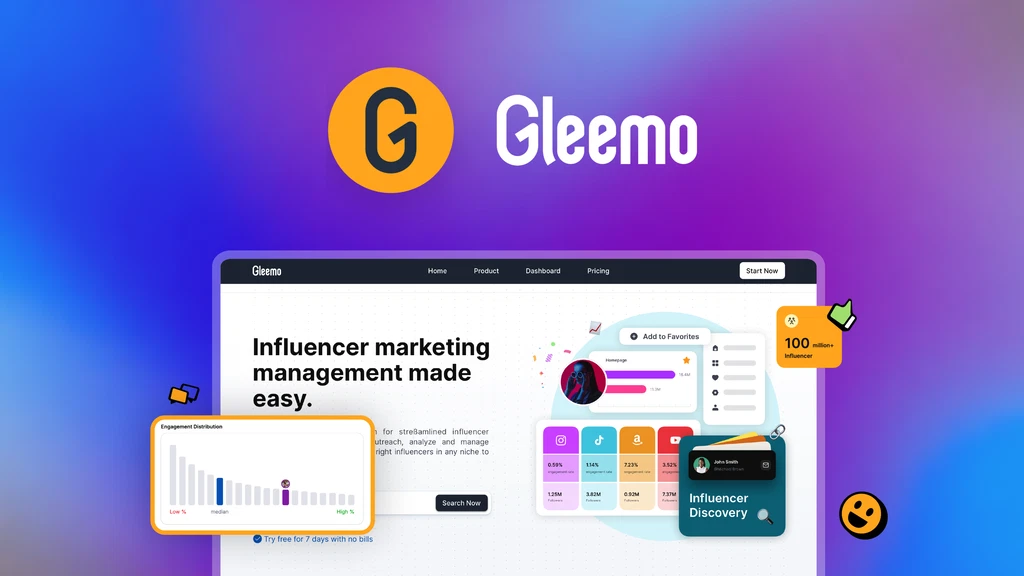
Ready to get started? Use tools like Gleemo to streamline influencer discovery, craft authentic campaigns, and track ROI. With the right approach, YouTube influencers can become your most powerful brand advocates—driving awareness, sales, and long-term loyalty.
